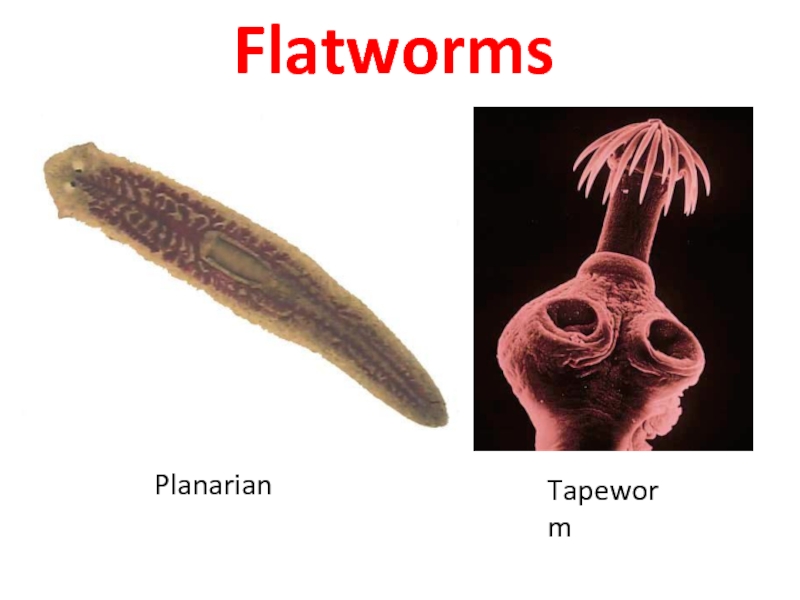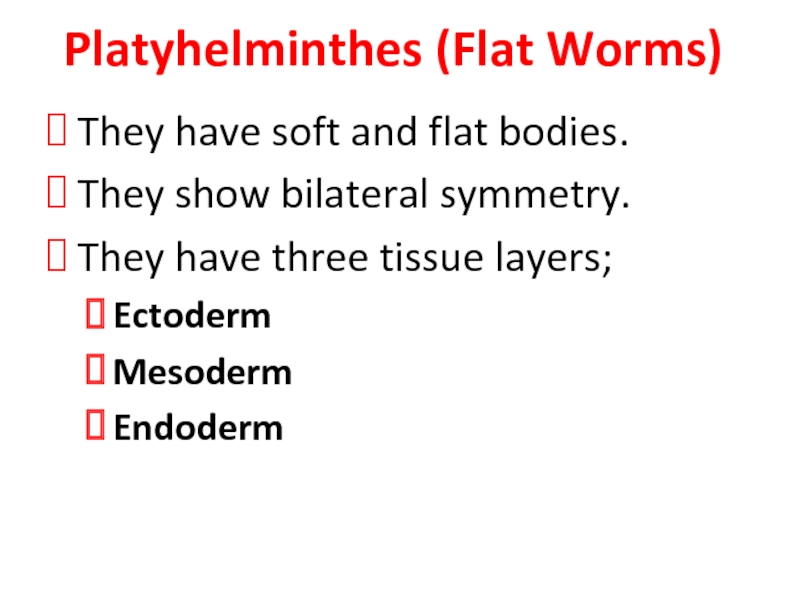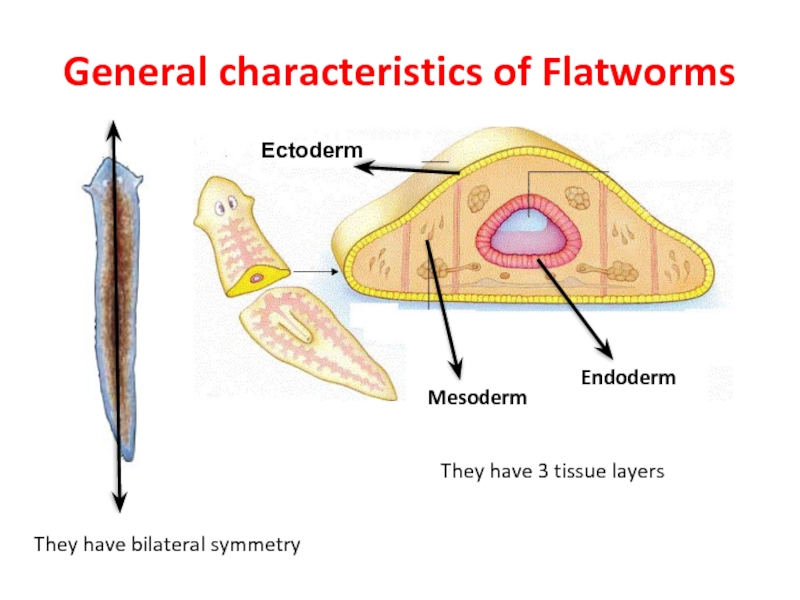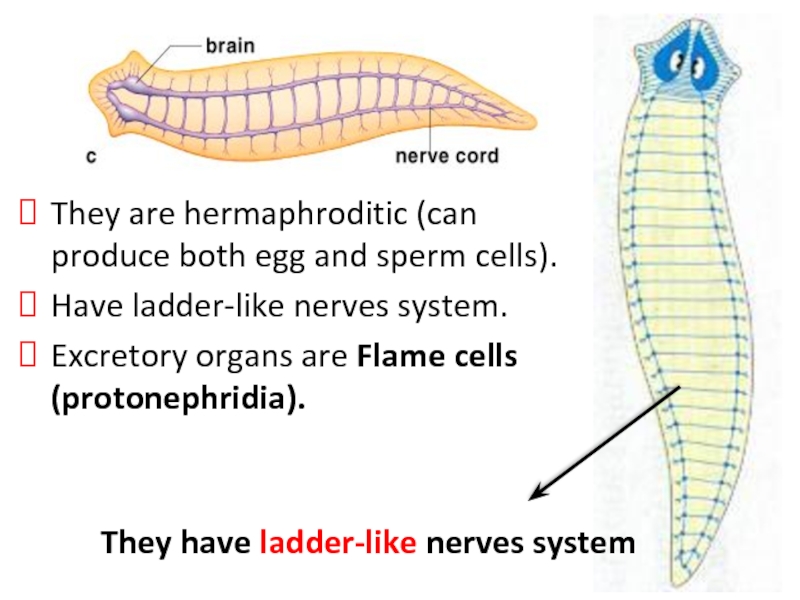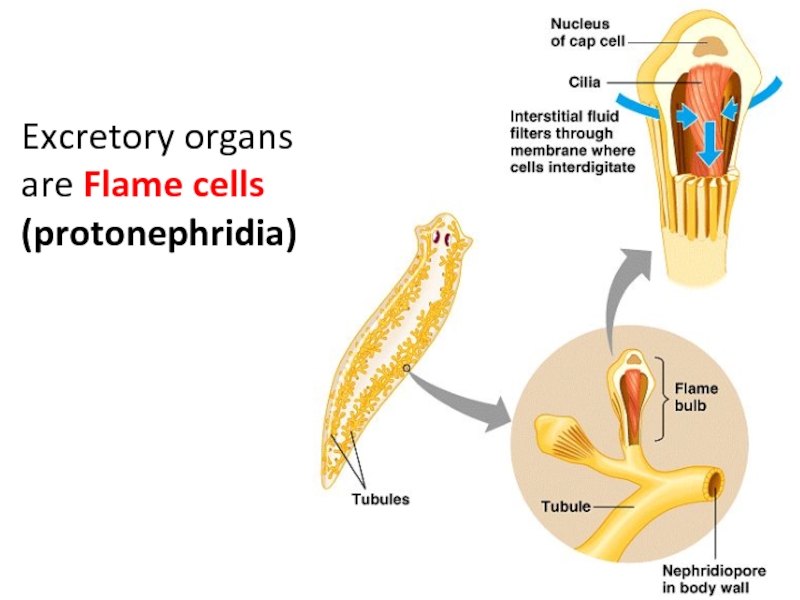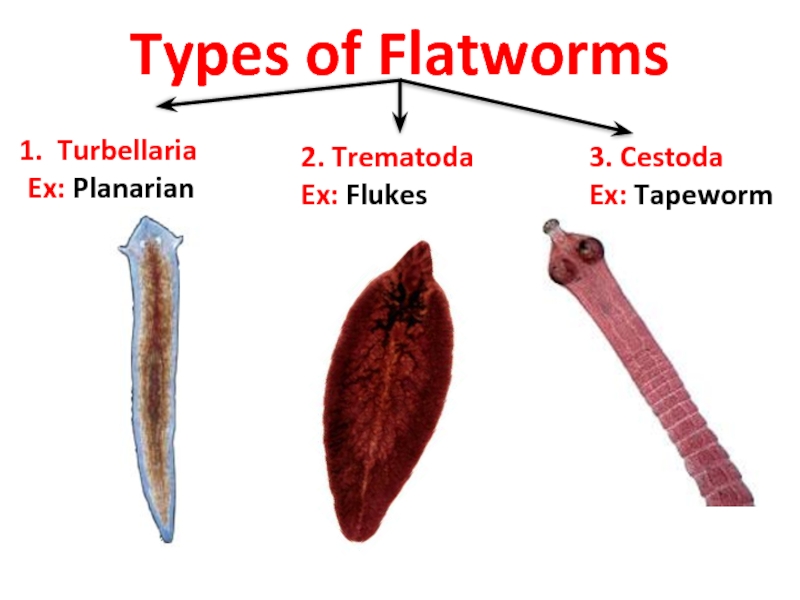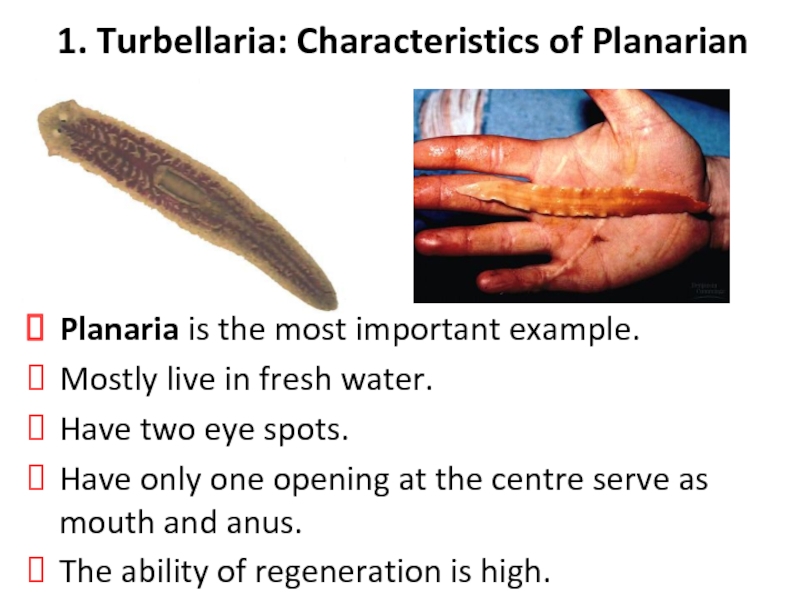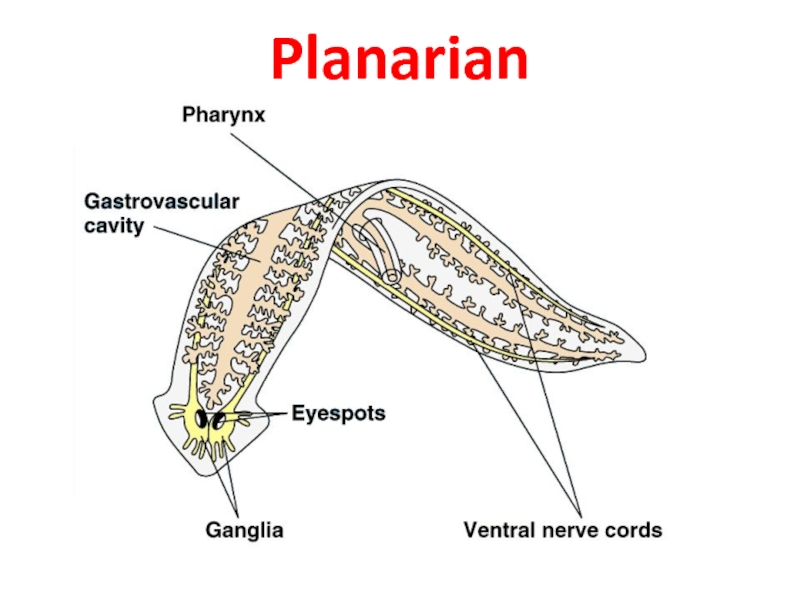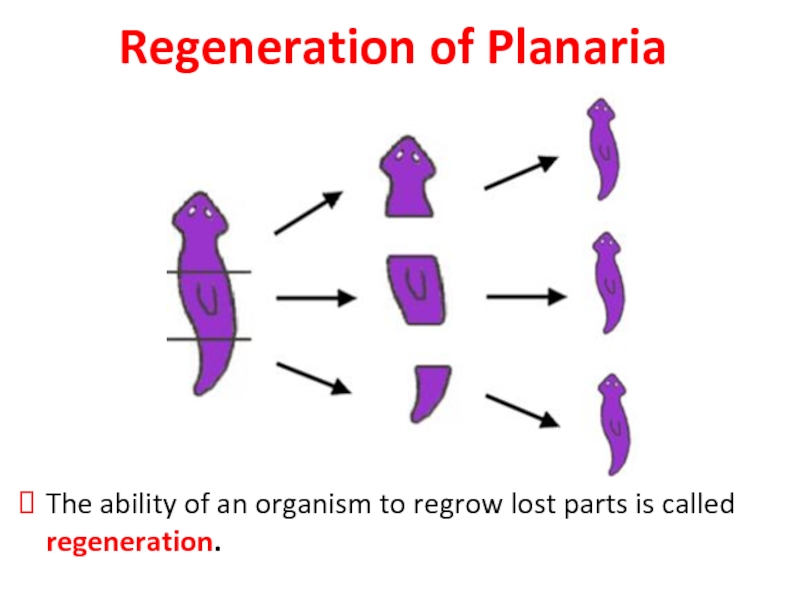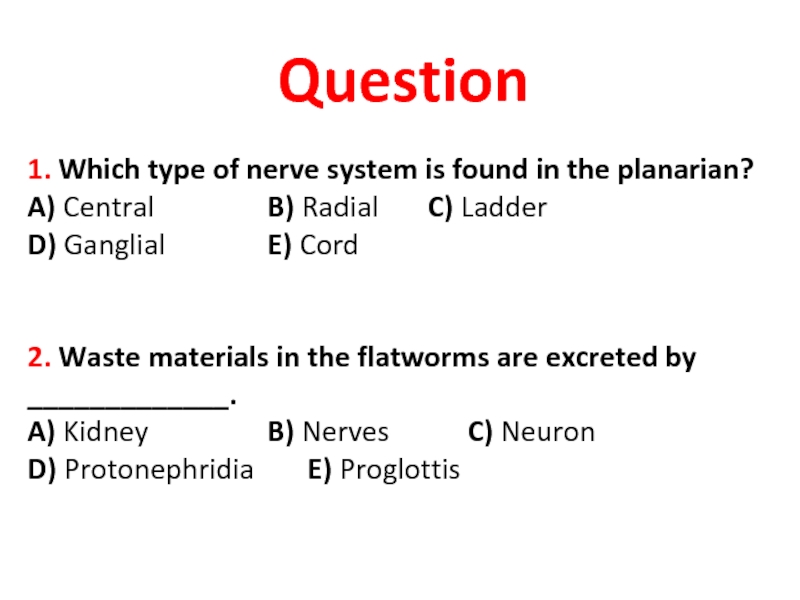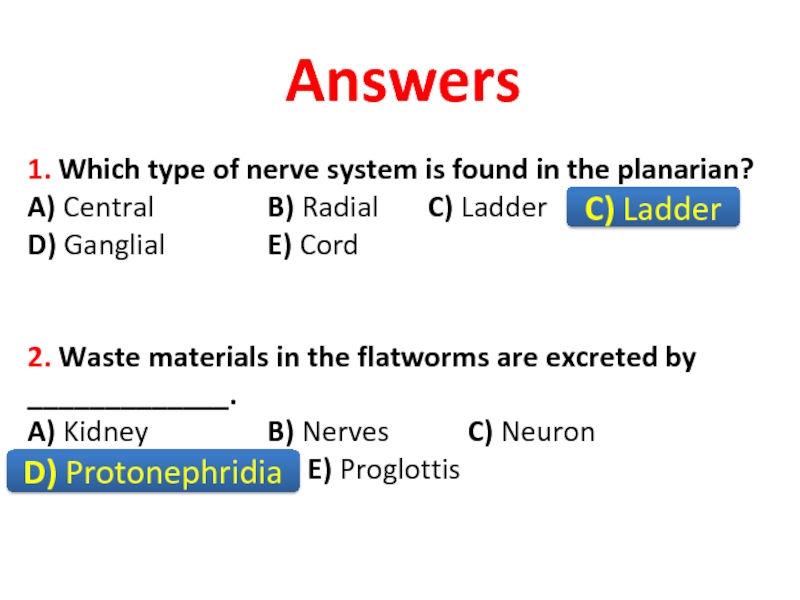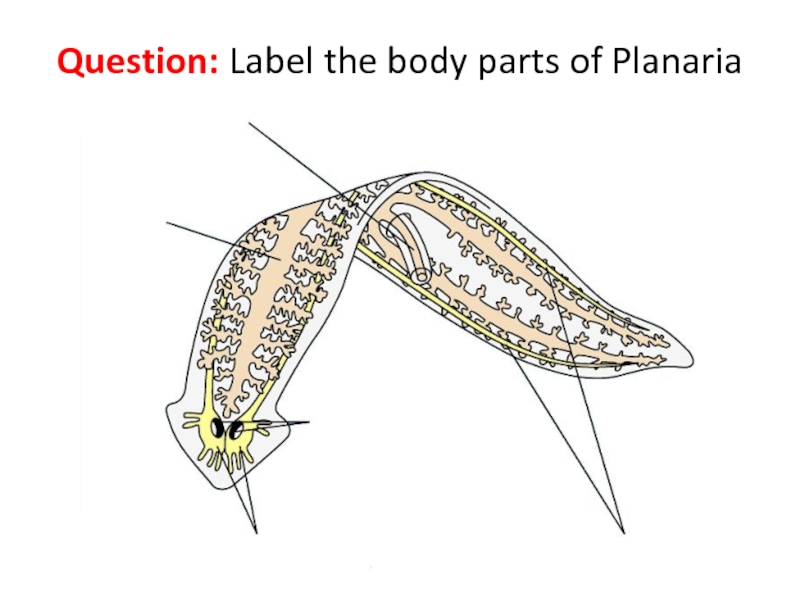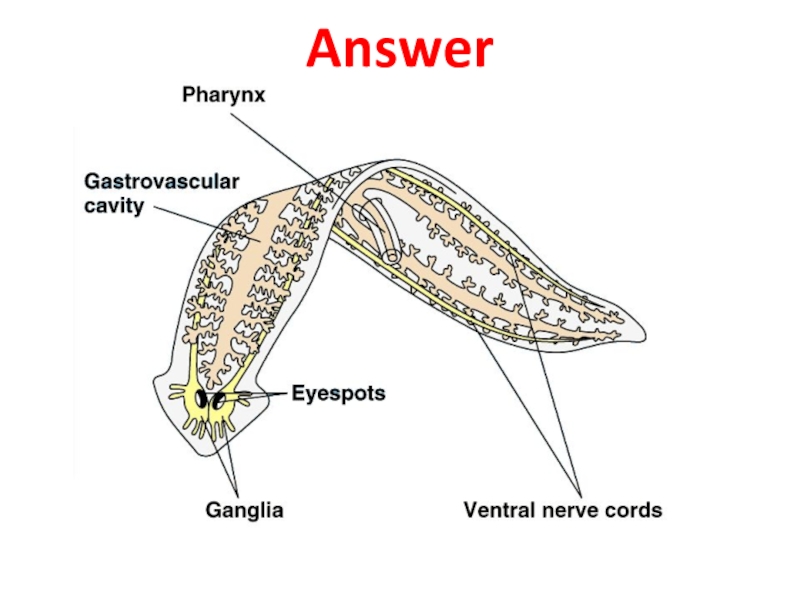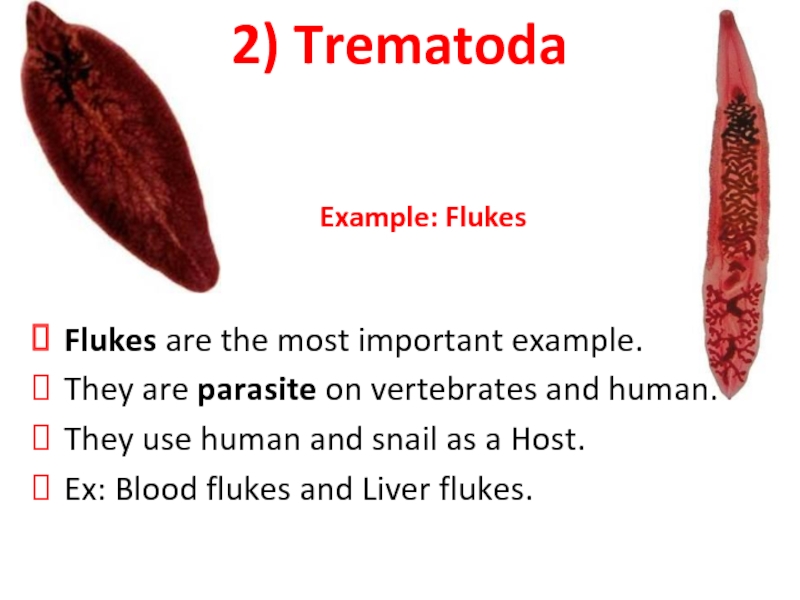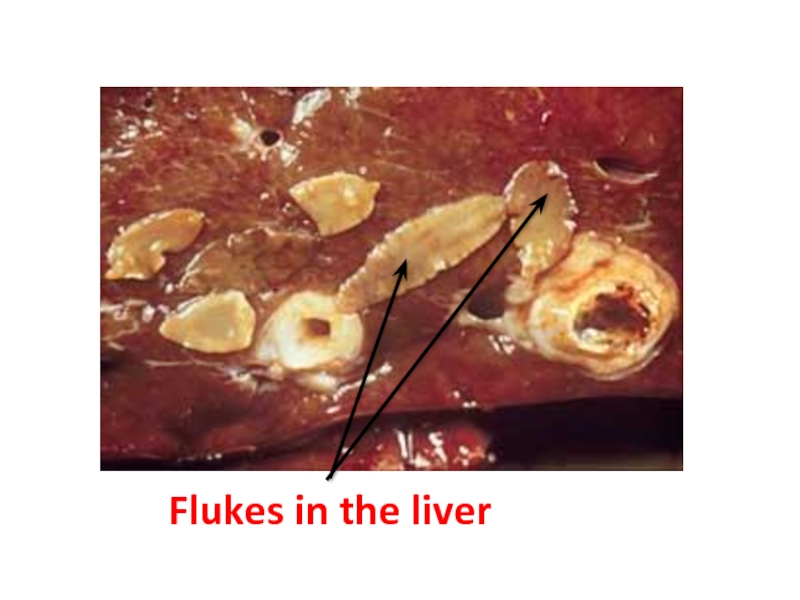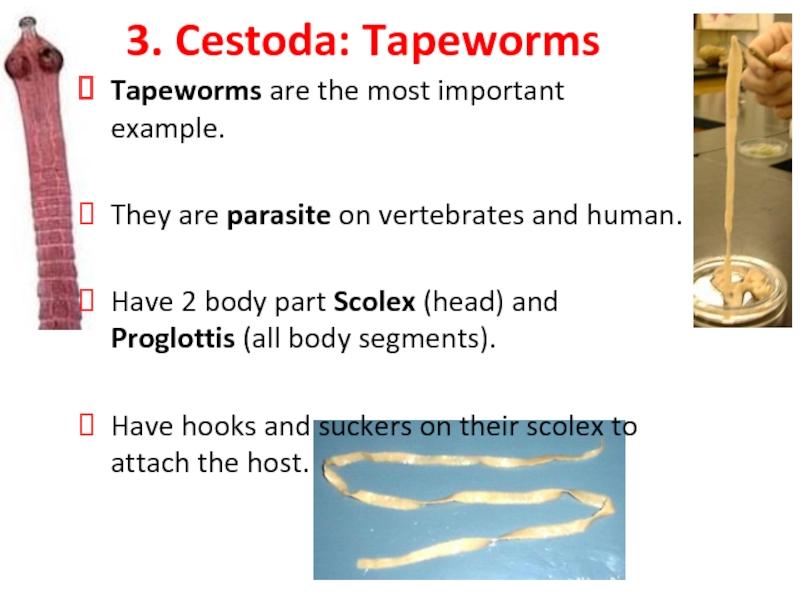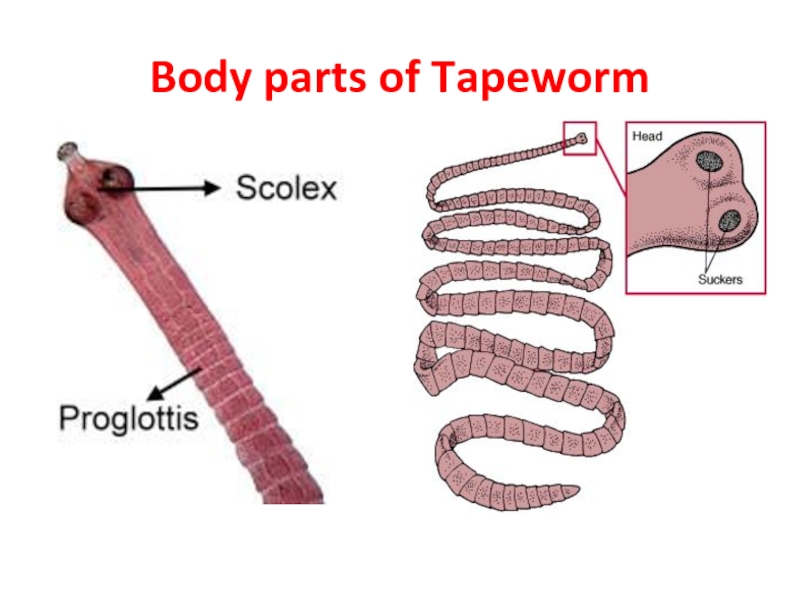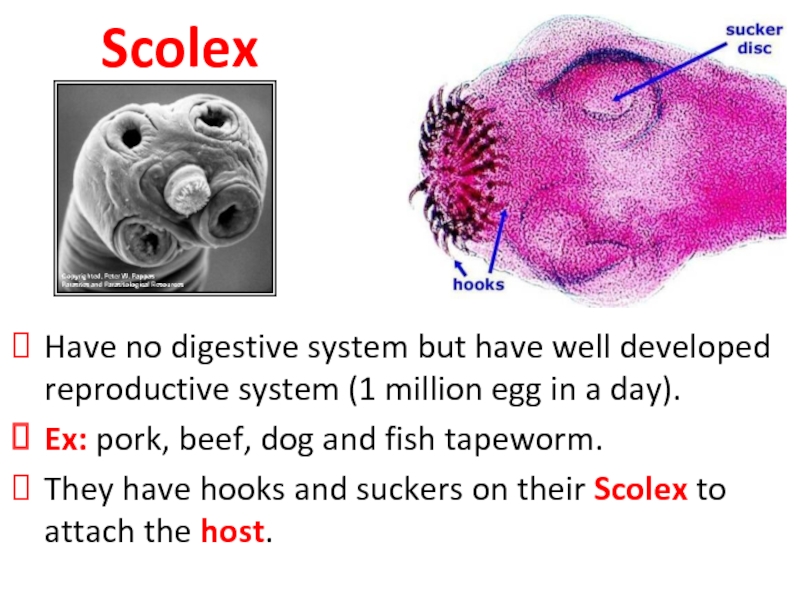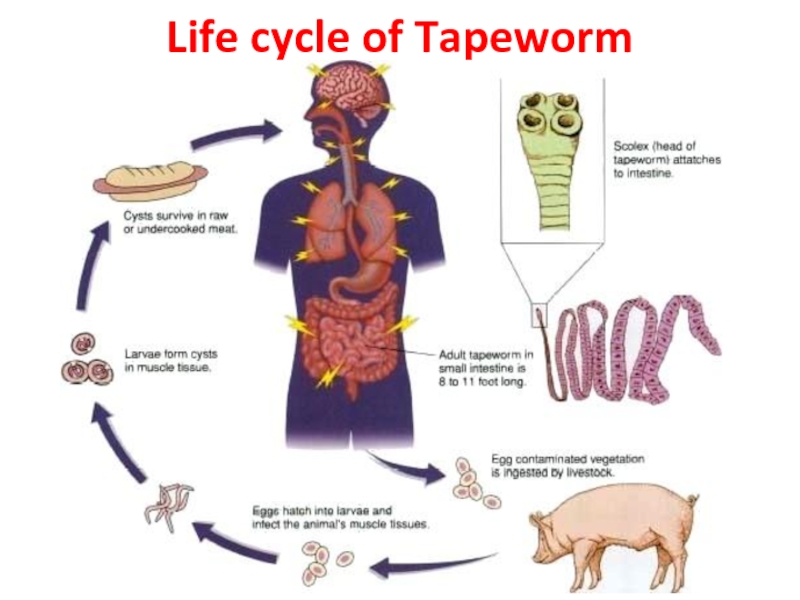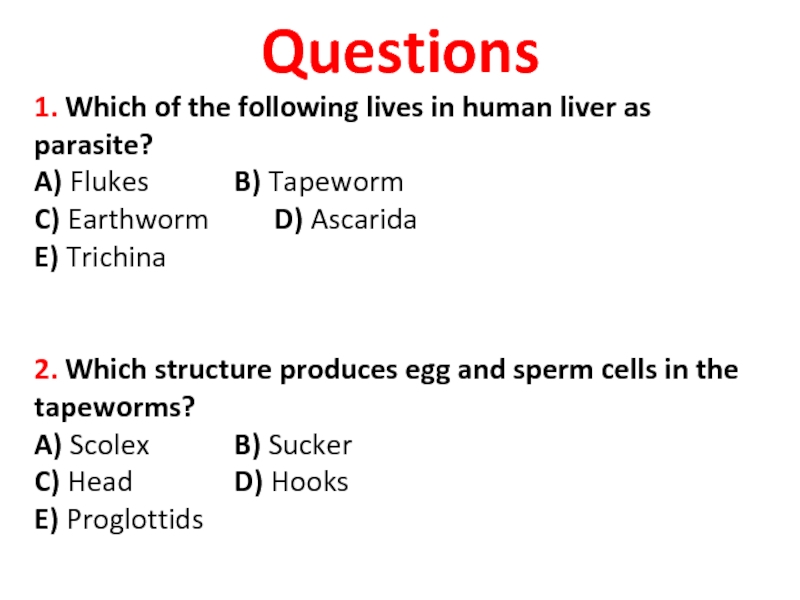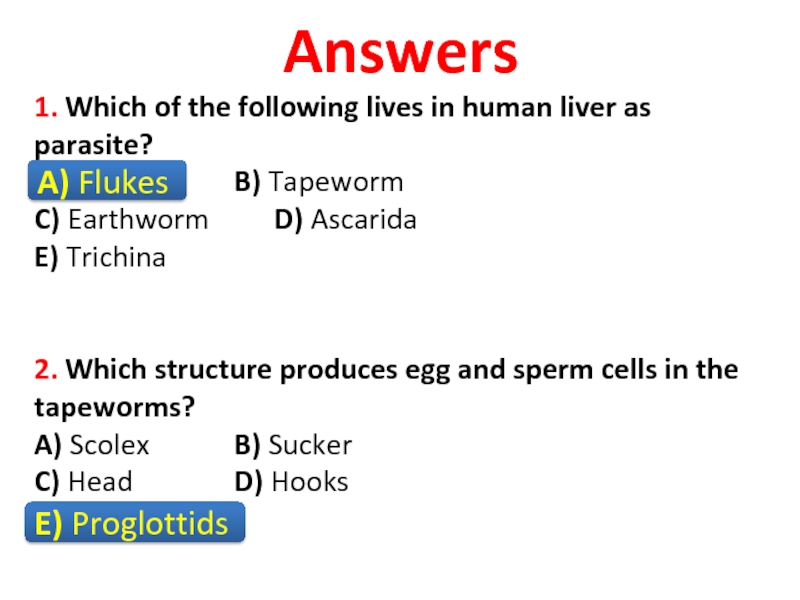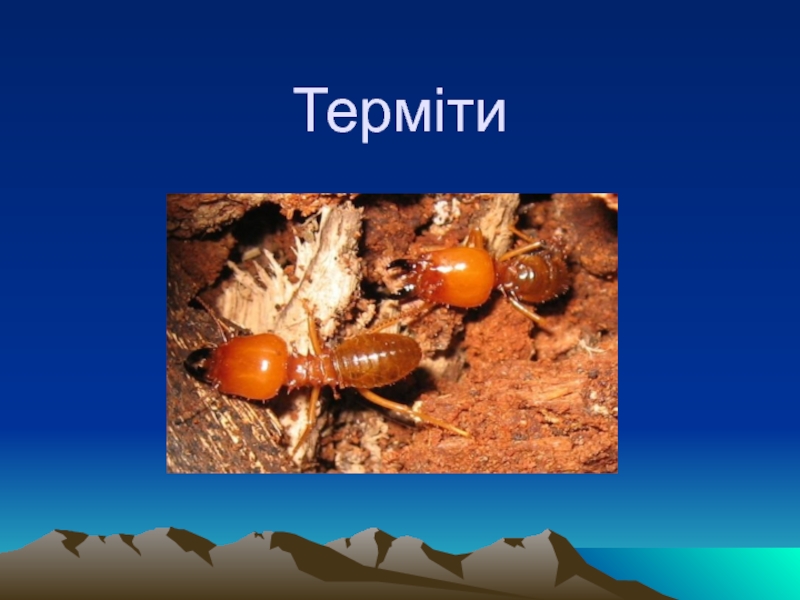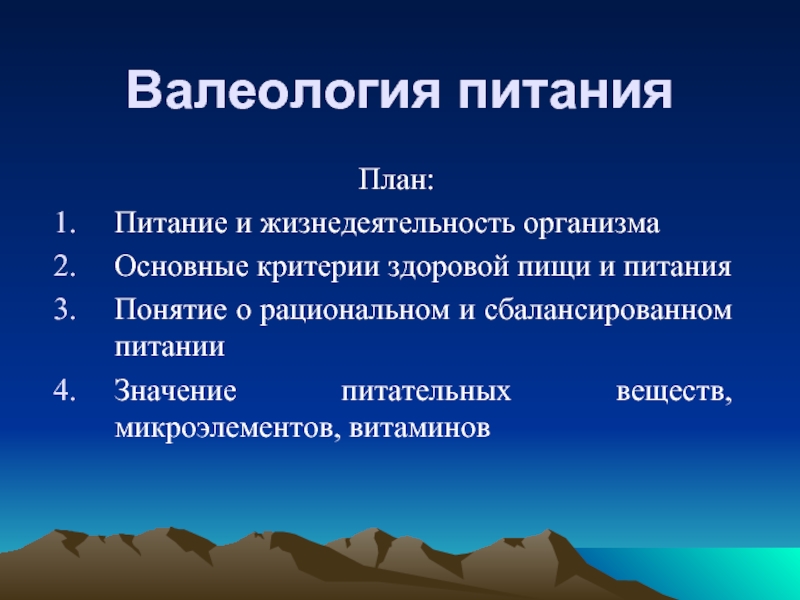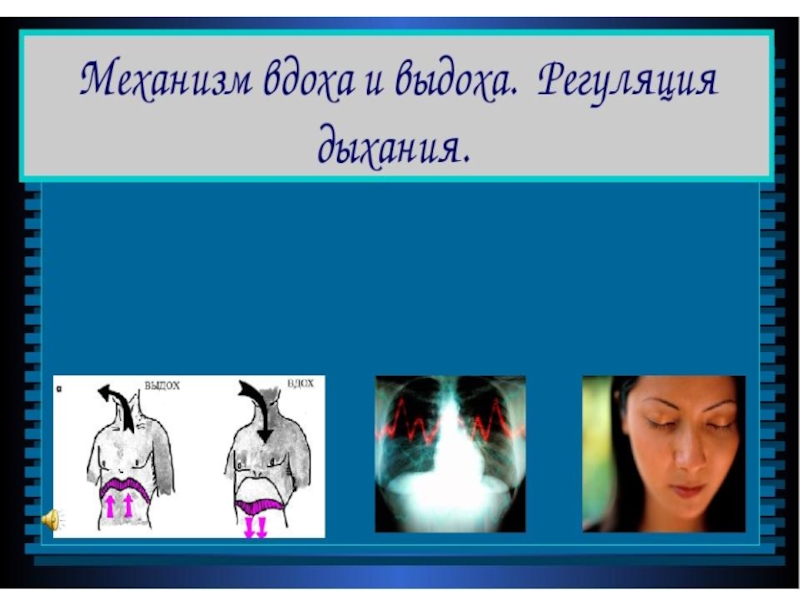- Главная
- Разное
- Дизайн
- Бизнес и предпринимательство
- Аналитика
- Образование
- Развлечения
- Красота и здоровье
- Финансы
- Государство
- Путешествия
- Спорт
- Недвижимость
- Армия
- Графика
- Культурология
- Еда и кулинария
- Лингвистика
- Английский язык
- Астрономия
- Алгебра
- Биология
- География
- Детские презентации
- Информатика
- История
- Литература
- Маркетинг
- Математика
- Медицина
- Менеджмент
- Музыка
- МХК
- Немецкий язык
- ОБЖ
- Обществознание
- Окружающий мир
- Педагогика
- Русский язык
- Технология
- Физика
- Философия
- Химия
- Шаблоны, картинки для презентаций
- Экология
- Экономика
- Юриспруденция
Topic: Flatworms презентация
Содержание
- 1. Topic: Flatworms
- 2. They have soft and flat bodies. They
- 3. General characteristics of Flatworms They have bilateral
- 4. They are hermaphroditic (can produce both egg
- 5. Excretory organs are Flame cells (protonephridia)
- 6. Types of Flatworms Turbellaria Ex: Planarian
- 7. 1. Turbellaria: Characteristics of Planarian Planaria is
- 8. Planarian
- 9. Regeneration of Planaria The ability of an
- 10. Question 1. Which type of nerve system
- 11. Answers 1. Which type of nerve system
- 12. Question: Label the body parts of Planaria
- 13. Answer
- 14. 2) Trematoda Example: Flukes Flukes are the
- 15. Life cycle of flukes
- 16. Flukes in the liver
- 17. 3. Cestoda: Tapeworms Tapeworms are the most
- 18. Body parts of Tapeworm
- 19. Scolex Have no digestive system but have
- 20. Proglottis They have no digestive system but
- 21. Life cycle of Tapeworm
- 22. Questions 1. Which of the following lives
- 23. Answers 1. Which of the following lives
Слайд 2They have soft and flat bodies.
They show bilateral symmetry.
They have three
Ectoderm
Mesoderm
Endoderm
Platyhelminthes (Flat Worms)
Слайд 3General characteristics of Flatworms
They have bilateral symmetry
Mesoderm
Endoderm
They have 3 tissue layers
Ectoderm
Слайд 4They are hermaphroditic (can produce both egg and sperm cells).
Have ladder-like
Excretory organs are Flame cells (protonephridia).
They have ladder-like nerves system
Слайд 71. Turbellaria: Characteristics of Planarian
Planaria is the most important example.
Mostly live
Have two eye spots.
Have only one opening at the centre serve as mouth and anus.
The ability of regeneration is high.
Слайд 9Regeneration of Planaria
The ability of an organism to regrow lost parts
Слайд 10Question
1. Which type of nerve system is found in the planarian?
A)
D) Ganglial E) Cord
2. Waste materials in the flatworms are excreted by _____________.
A) Kidney B) Nerves C) Neuron
D) Protonephridia E) Proglottis
Слайд 11Answers
1. Which type of nerve system is found in the planarian?
A)
D) Ganglial E) Cord
2. Waste materials in the flatworms are excreted by _____________.
A) Kidney B) Nerves C) Neuron
D) Protonephridia E) Proglottis
C) Ladder
D) Protonephridia
Слайд 142) Trematoda
Example: Flukes
Flukes are the most important example.
They are parasite on
They use human and snail as a Host.
Ex: Blood flukes and Liver flukes.
Слайд 173. Cestoda: Tapeworms
Tapeworms are the most important example.
They are parasite on
Have 2 body part Scolex (head) and Proglottis (all body segments).
Have hooks and suckers on their scolex to attach the host.
Слайд 19Scolex
Have no digestive system but have well developed reproductive system (1
Ex: pork, beef, dog and fish tapeworm.
They have hooks and suckers on their Scolex to attach the host.
Слайд 20Proglottis
They have no digestive system but have well developed reproductive system
Proglottis
Слайд 22Questions
1. Which of the following lives in human liver as parasite?
A)
C) Earthworm D) Ascarida
E) Trichina
2. Which structure produces egg and sperm cells in the tapeworms?
A) Scolex B) Sucker
C) Head D) Hooks
E) Proglottids
Слайд 23Answers
1. Which of the following lives in human liver as parasite?
A)
C) Earthworm D) Ascarida
E) Trichina
2. Which structure produces egg and sperm cells in the tapeworms?
A) Scolex B) Sucker
C) Head D) Hooks
E) Proglottids
A) Flukes
E) Proglottids
